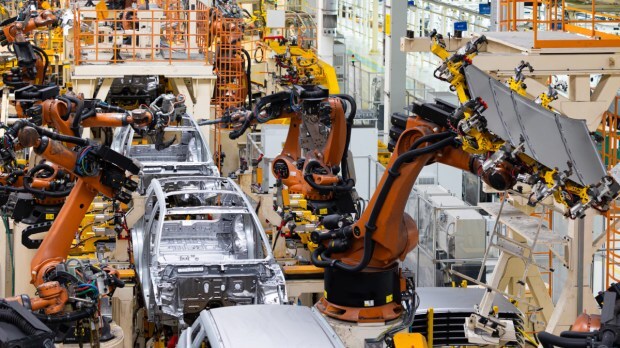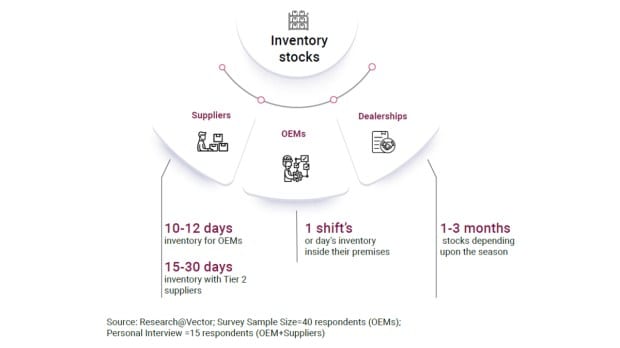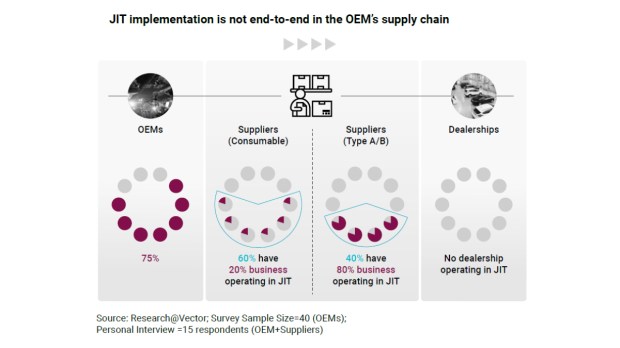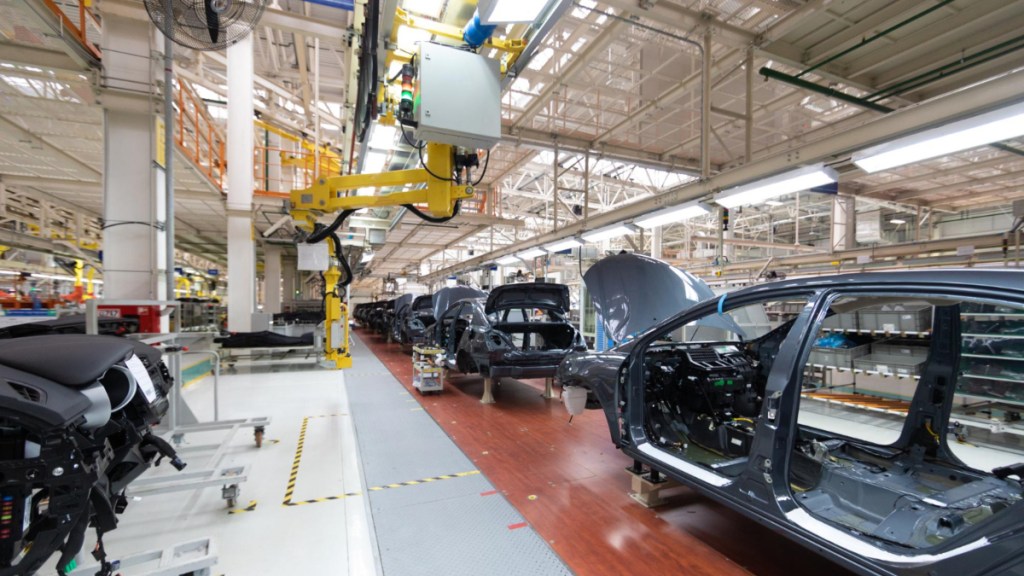A recent survey shows bulk of auto makers in India have not yet aligned their operations with the Just-In-Time (JIT) completely. While OEMs have implemented them at the plant level, it’s still missing at the supply chain end.
The survey conducted by Vector Consulting involved 40 automakers, which included 15 personal interviews of respondents (OEMs and suppliers) has shed some interesting insights on the ground reality of JIT in the context of India’s automotive manufacturing landscape.
It was in 1970, Japanese automaker Toyota Motor Corporation pioneered the concept of Just-In-Time (JIT) (also known as KANBAN) production system, which was later adopted globally by other automakers in the 1980’s and 1990’s.

“Indian auto supply chain needs end-to-end visibility and reaction systems to that visibility. Today, the system is opaque – this is not about having IT systems that talk to each other but having production and distribution systems that react at same frequency to the level of build-up of inventory. This will prevent the classic bull-whip effect, where players react too late,” said Achal Saran Pande (pictured above), Partner, Vector Consulting, in an exclusive interaction with Financial Express Online.
The survey found significant expediting and firefighting (75% of the respondents of this research indicated that the JIT system involves a lot of firefighting). Firefighting is defined as a significant activity undertaken to deal with crisis. This means that an attempt is made to ensure 1-2 days of full kit at OEMs and suppliers, but from time to time the kits are incomplete for production.
It found that the availability of full kits was found to be only 75% at OEMs and 70% at suppliers for assembly. Even if one item was not available, the plan has to be changed. Consequently, the production plan adherence is poor, especially at suppliers (only 80-85%).
JIT advantages & disadvantages
The Just-In-Time system enables movement of the inventory (material) ‘just in time’ in the entire supply chain and is based on pull from the previous node (process) or ‘bin availability’. For instance, when a bin signals that it needs replenishment, it initiates the movement of materials from the supplier or storage area to the production line.

The automotive industry for long has focussed on lean manufacturing practice.
This also means that the suppliers, automakers, and dealerships are completely aligned on the supply chain flow, a delay by any stakeholder would disrupt the complete line.
In terms of positives, JIT enables waste minimisation, inventory reduction (raw materials and finished goods), enhanced efficiency & productivity and lower production and storage costs.

Average inventory stocks at each stakeholder.
But on the other hand, Pande pointed out that the JIT systems rely heavily on synchronised production and inventory levels. However, “achieving this synchronisation is challenging, especially in environments where demand levels fluctuate, and supply and processes exhibit high variability.” The increasing diversity of products and variants shortened product life cycles, and rapid technological changes in the auto industry make demand levelling difficult to achieve.
Furthermore, the auto industry experiences considerable variability due to shifting regulations, frequent introduction of new components, and changes in consumer preferences, making it challenging to maintain optimal inventory levels.
Pull-based inventory
One has to accept that the Indian ecosystem is quite different from that of the other parts of the world. A one size fits all solution seldom works.
“Most OEMs pull inventory from warehouses of their vendors. The pull is limited only to the inventory movement between warehouses. But the system as a whole has mismatched inventory and lot of expediting, thus affecting the efficiencies of the system as a whole,” said Pande.
Responding to a query on why automotive tier 2-3 suppliers in India have not yet adopted JIT, Nishat Anjum, Consultant, Vector Consulting Group explained that there are three key factors – Demand fluctuations, Supply-side fluctuations and high-efficiency requirements.

“The current VUCA environment brings with it high and highly unpredictable lead times for inputs.The implementation of JIT requires high levels of efficiency, which often necessitates substantial upfront investments in time and resources. Tier 2 and Tier 3 suppliers may lack the necessary resources to make these investments,” said Anjum.
Pande then pointed out that at present the “Indian players are yet to implement JIT end-to-end (from suppliers to dealers) in their processes. In its current form, it cannot be implemented as a concept, but a modified version can be introduced, which takes care of the limitations of the original approach. ”

The JIT relies heavily on a transparent interdependent manufacturing ecosystem.
Attempts by OEMs to avail themselves of the inventory benefits of JIT has resulted in the creation of two separate worlds within the supply chain: a JIT world at the OEMs and a non-JIT world at partner organisations. This has led to stock pileups with partners in the supply chain, resulting in increased costs and low capital turnover for suppliers and dealers, often leading to friction in relationships.
In conclusion, to implement a pull system that can benefit the entire supply chain, a solution is proposed involving buffering and intelligent decoupling to absorb variability in the system. This approach ensures seamless flow, provides flexibility, and aligns the supply chain with market movements without increasing inventory levels.
All images & infographic courtesy: Vector Consulting



















